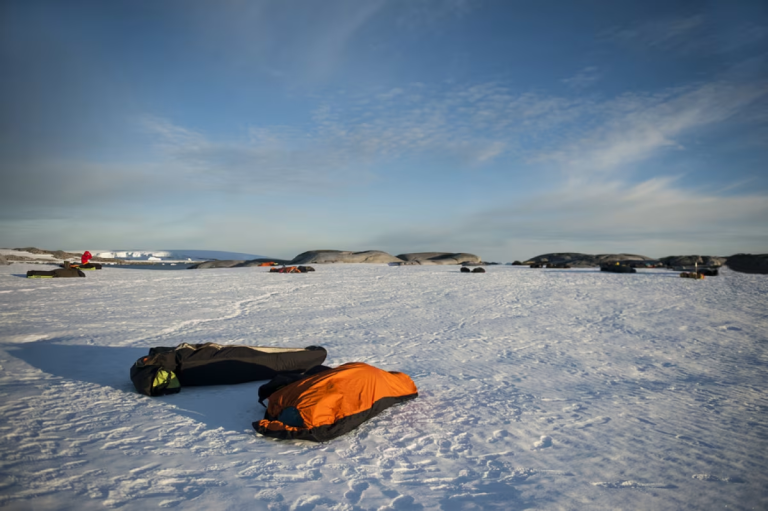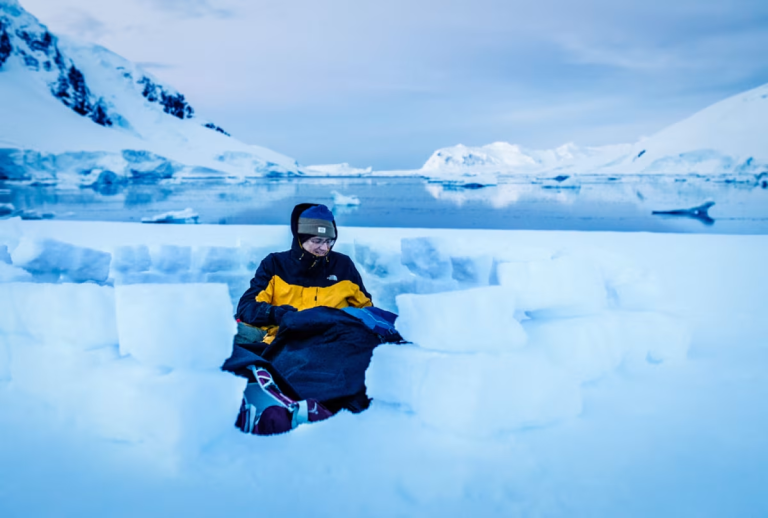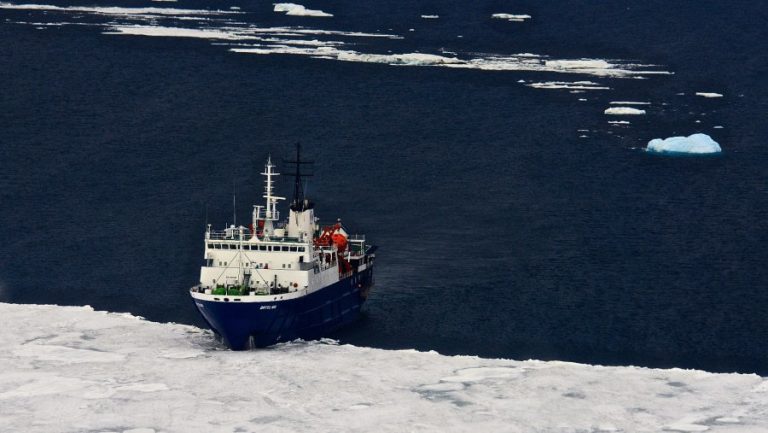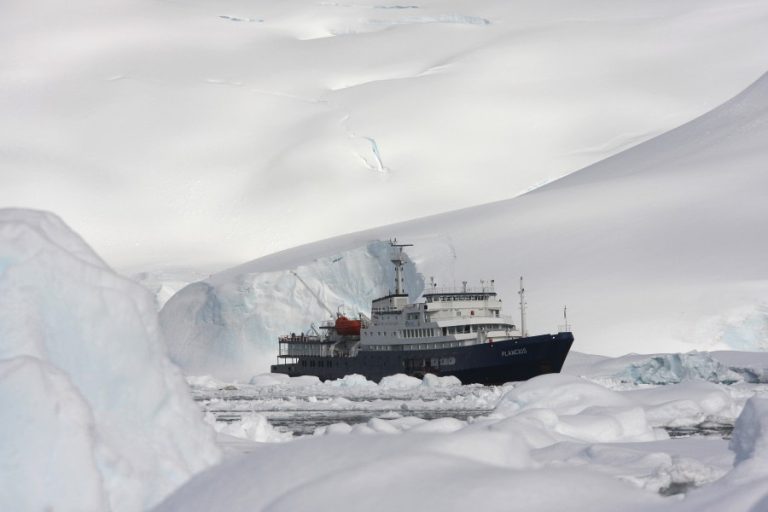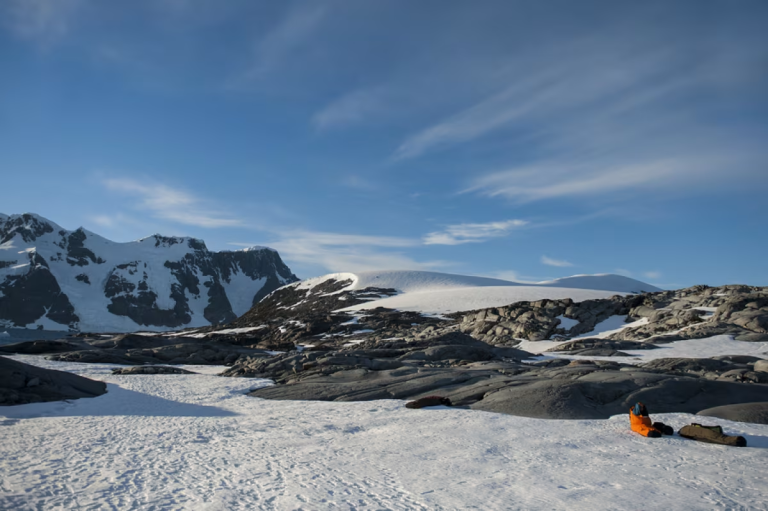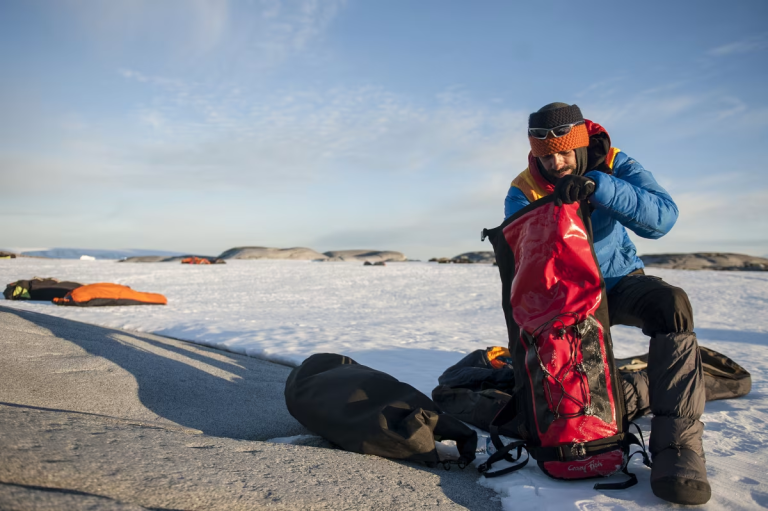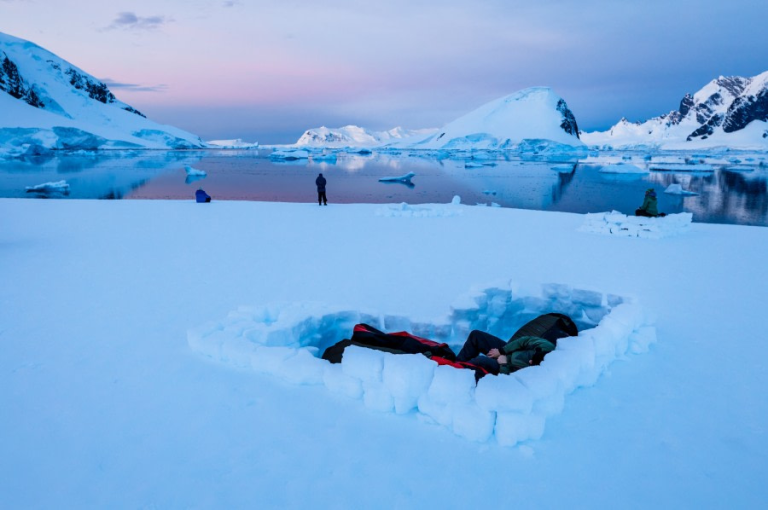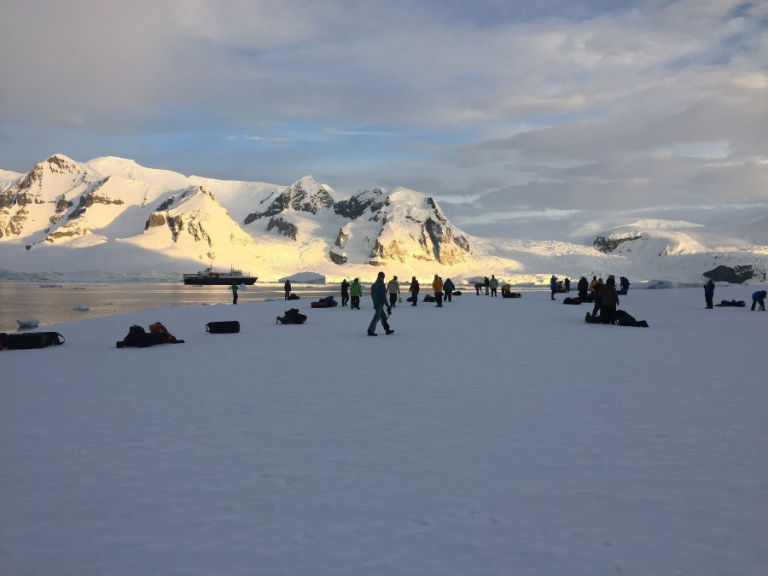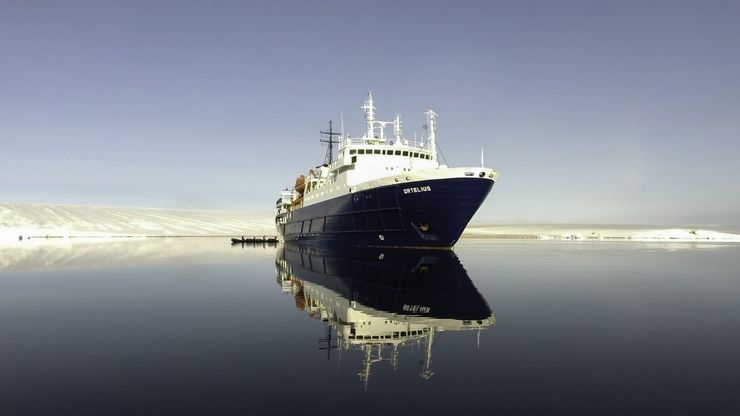A Guide to Camping in Antarctica with Oceanwide
Among the most intense experiences one can have during an Antarctic expedition, the Antarctic camping activity offered by Oceanwide Expeditions holds a place of honor. It’s not simply about sleeping outdoors, but about fully immersing yourself in one of the most remote, silent, and fascinating environments on the planet.
Those who choose this activity have the extraordinary opportunity to spend a night under the southern sky, wrapped in a bivouac bag, surrounded only by snow, ice, and the sounds of untouched nature. This guide is intended to support those considering this adventure, providing all the essential information to understand how Antarctic camping works and what to expect from such a unique experience.
Camping_Oceanwide
Camping_Oceanwide
A Genuine Polar Experience
The Antarctic camping experience offered by Oceanwide Expeditions is designed for those who want to experience the White Continent in an authentic and unfiltered way. Unlike traditional camping, no tents are used. Due to wind conditions and logistical flexibility, participants are provided with bivouac bags: durable, waterproof, breathable, and far more suitable for the extreme environment of Antarctica. These, combined with high thermal-performance polar sleeping bags and insulating mats, offer protection and comfort even in harsh conditions. The goal is to offer a night of true connection with the Antarctic environment—safe, but without barriers between humans and nature.
Camping takes place in carefully selected areas of the Antarctic Peninsula, always subject to weather conditions, environmental regulations, and onboard logistics. The opportunity is available only on specific expeditions aboard the Hondius, Plancius, and Ortelius vessels, all of which are equipped for polar navigation.
Participation is open to everyone, with no prior experience or specific technical skills required. However, as an outdoor activity in one of the most inhospitable places on Earth, it requires a good level of adaptability. Participants should be prepared to walk on snow, rock, or ice, help set up camp alongside guides, and assist with cleanup the following morning.
The maximum number of campers is limited to 30 per night, and advance reservation is required. Occasionally, during the expedition, additional camping nights may be offered—depending entirely on environmental and logistical conditions.
Ortelius
Plancius in the Polar Circle
A Night on the Ice: How It Works
The camping routine begins after dinner, when participants are transported ashore by Zodiacs. Upon landing, the group sets up camp under the guidance of experienced crew members, who stay onshore throughout the night with the campers. The team remains in constant radio contact with the ship, ready to respond in case of emergency.
Each camper is provided with an insulating mat, a synthetic sleeping bag with a cotton liner, and a breathable, waterproof bivouac sack. Footwear includes sturdy, insulated rubber boots suitable for walking on wet or icy terrain.
In full compliance with the Antarctic Treaty and IAATO regulations, the camping experience is conducted in complete harmony with the environment. For this reason, bringing food, hot drinks, stoves, or fuel ashore is strictly prohibited. This approach not only protects the local ecosystem but also makes the camping experience even more authentic.
Because every detail is designed to minimize environmental impact, even personal hygiene needs are managed using strict ecological criteria. Guests are advised to use onboard restrooms before disembarking, but in case of emergency, a shared portable toilet is provided. For added convenience during the night, participants are encouraged to bring a wide-mouthed water bottle to use as a personal hygiene container.
The following morning, before returning onboard for breakfast, all participants help clean the site thoroughly. Every item is carefully collected and sanitized, ensuring the landscape remains exactly as it was: untouched, pure, and pristine. This cleanup is a core part of the experience and adds depth and meaning.
Camping_Oceanwide
Camping_Oceanwide
Weather Conditions: Unpredictable and Exciting
One of the key factors to consider with Antarctic camping is the unpredictability of the weather, which can directly affect whether the activity takes place. Even under clear skies and seemingly favorable conditions, katabatic winds—intense cold air currents descending from glaciers—can suddenly develop and force a cancellation or postponement of the camp.
If a shore landing proves impossible, the crew may offer an alternative outdoor night on the ship’s deck—still immersive and fully compliant with safety standards.
A minimum of 10 participants is required for the activity to proceed, with a maximum of 30 campers per night.
During the Antarctic summer, coastal temperatures typically range from -5°C to +8°C (23°F to 46°F), though wind chill can make it feel significantly colder. Proper polar-specific technical clothing is therefore essential for both comfort and safety throughout the activity.
Getting Dressed the Right Way
Oceanwide Expeditions provides all the necessary technical camping gear, but each participant is responsible for their own personal clothing. Layering is crucial—starting with breathable thermal underwear, followed by a fleece or softshell jacket, and topped with a windproof, waterproof down jacket.
Hands should be protected with thermal gloves plus an inner liner glove, while feet require thick socks (preferably wool or synthetic), with spare pairs on hand. A warm hat, neck gaiter, or balaclava helps maintain body temperature. UV-protection sunglasses and high-SPF sunscreen are essential, as sun reflecting off the ice can cause burns even in cold conditions. From February onwards, when nights grow darker, a lightweight headlamp is also recommended. Cotton garments like t-shirts and jeans should be avoided, as they retain moisture and can become dangerously cold when wet.
Camping_Oceanwide
Camping_Oceanwide
A One-of-a-Kind Experience in the Heart of Nature
What makes Antarctic Camping so special is not just the destination, but the way it is experienced. There are no filters between the camper and the landscape—you sleep under the open sky, hear the calls of wildlife, listen to the creaks and cracks of moving ice, and gaze at the stars (or midnight sun) in total silence. It’s not every day you can say you slept on an uninhabited continent, wrapped in a sleeping bag and watched over by expert guides in a place inaccessible to most of the world.
This is an experience that goes beyond tourism: it is a test of adaptability, a moment of awareness, and a deep connection with the natural world.
To take part in the camping activity, you must book at least one night in advance by selecting an expedition that includes the option—available on the official Oceanwide Expeditions website. Any additional nights can be arranged onboard, depending on conditions. There is no waiting list, so early booking is essential.
In conclusion, Antarctic Camping is one of the most authentic and moving experiences a traveler can have during a polar expedition. Sleeping outdoors in Antarctica—in absolute silence, immersed in a surreal, untouched setting—means returning to the very essence of exploration.
Oceanwide Expeditions offers this opportunity with the expertise, safety, and environmental respect that have always defined its operations. For those who want more than just observation—who want to truly live Antarctica—camping is an unforgettable choice, one of those rare experiences that will remain etched in memory for a lifetime.
Don’t miss news, updates, and reviews of Oceanwide Expeditions on Cruising Journal, featuring photos, videos, and cruise deals.

